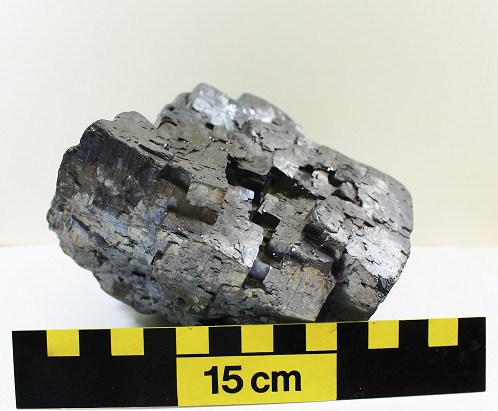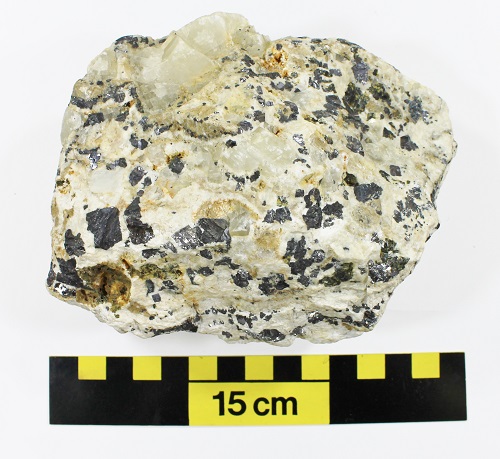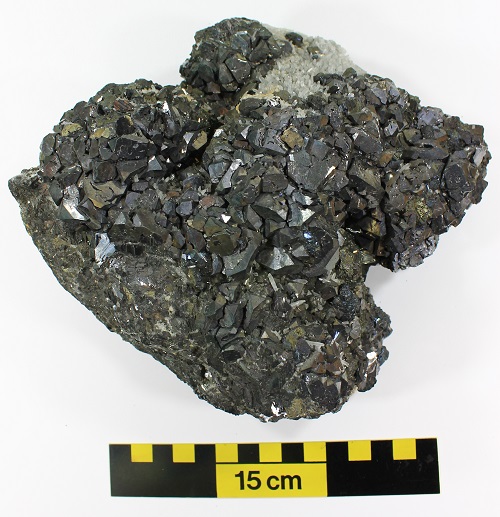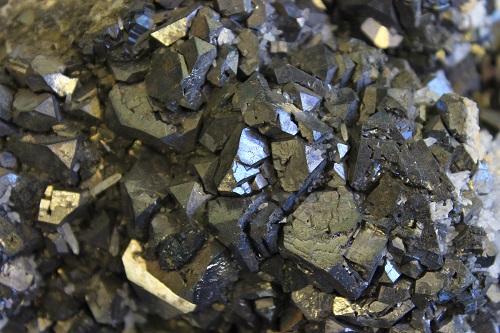Specimen of the month from the KGS collection: Galena

Galena, or lead sulfide, is among Earth's most abundant sulfide minerals and is mined in many countries around the world. It takes a crystal form, often occurring with other minerals such as sphalerite, calcite, and fluorite.
When the fluorspar industry flourished in western Kentucky, galena was recovered with the fluorspar from the Columbia Mines in Crittenden County and Silver and Royal Mines in Livingston County. It also occurs to a limited extent in the central Kentucky vein system, where it used to be mined near Gratz in Owen County, and in vein deposits in Scott and Franklin Counties. In both of these areas, galena crystals can be found with barite and sphalerite crystals. Galena also occurs with calcite, dolomite, and pyrite.

Galena is the most important ore from which lead is refined and is also a significant source of silver. For environmental reasons, lead is no longer used in certain products such as gasoline and paint. It is still used in lead-acid batteries for vehicles and back-up power supplies to prevent outages in computer networks, communications,and other critical systems.
View all archived specimen of the month from KGS collection


